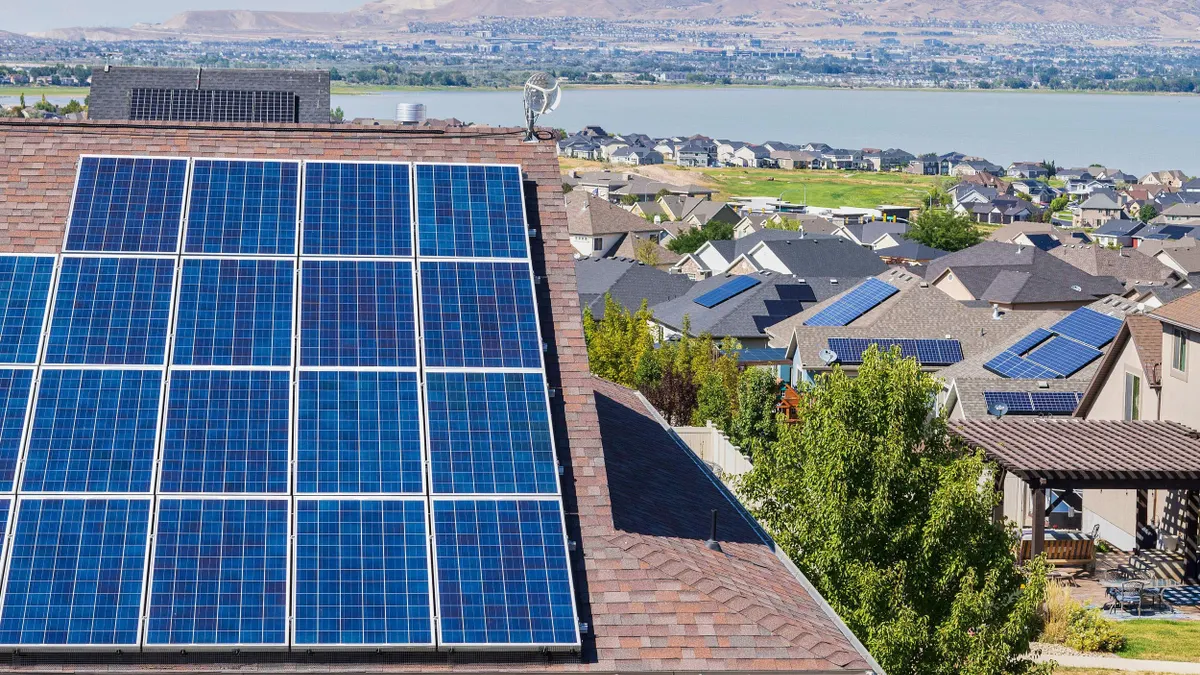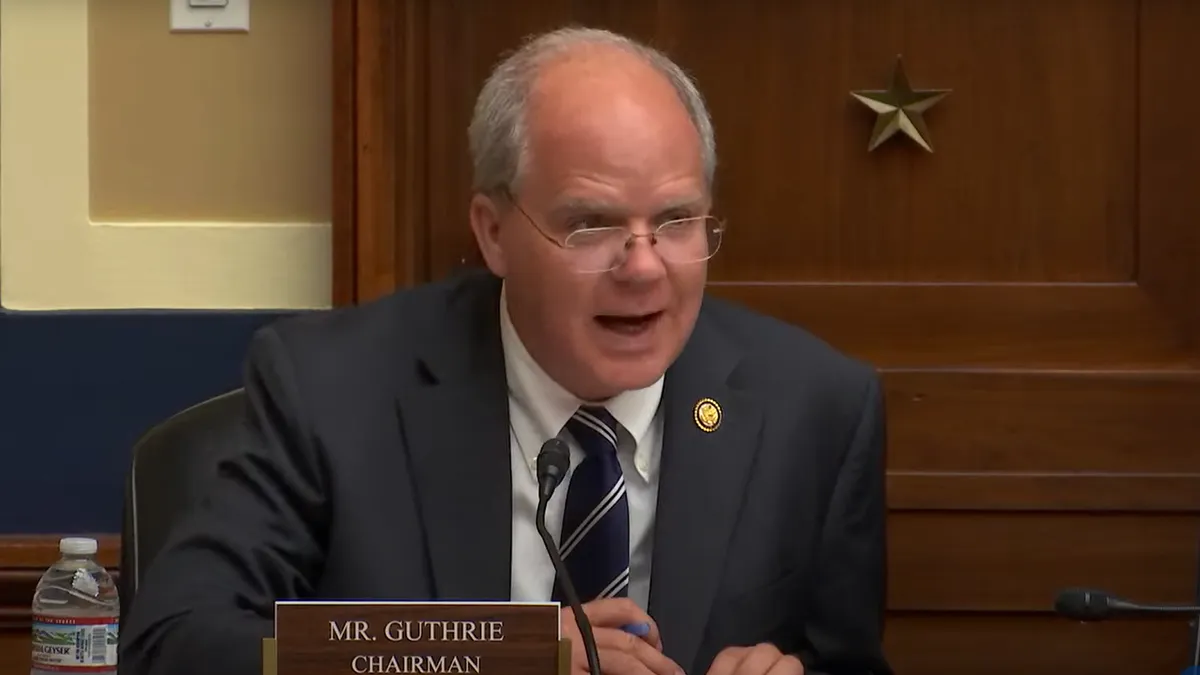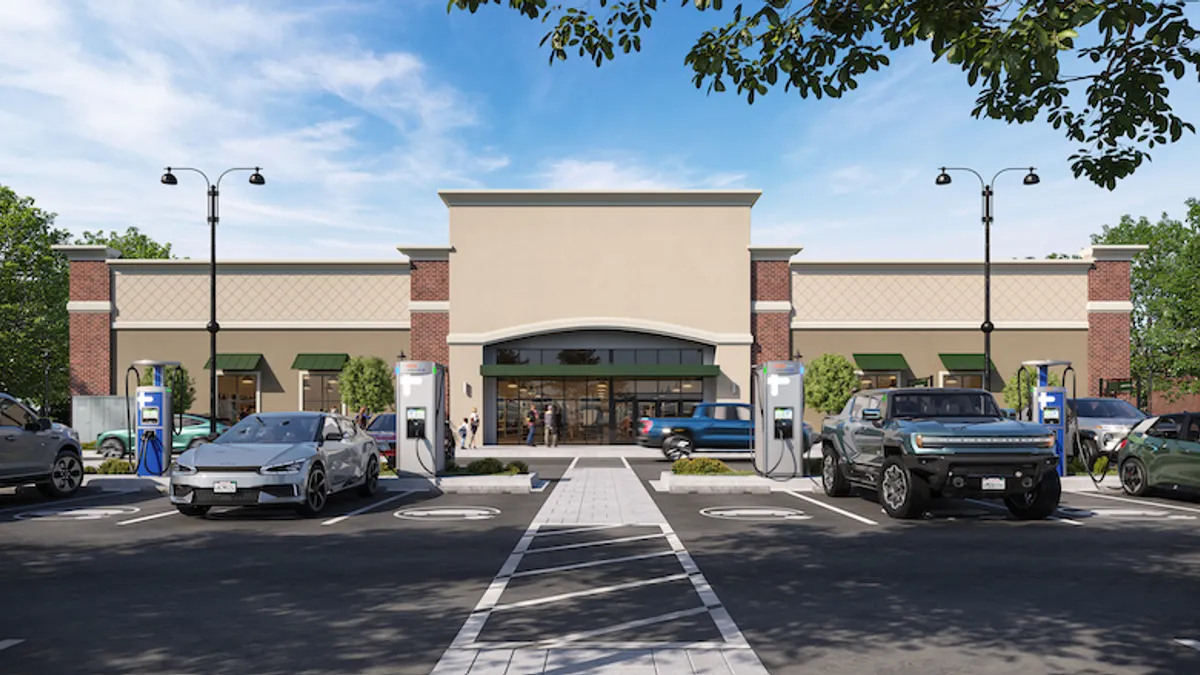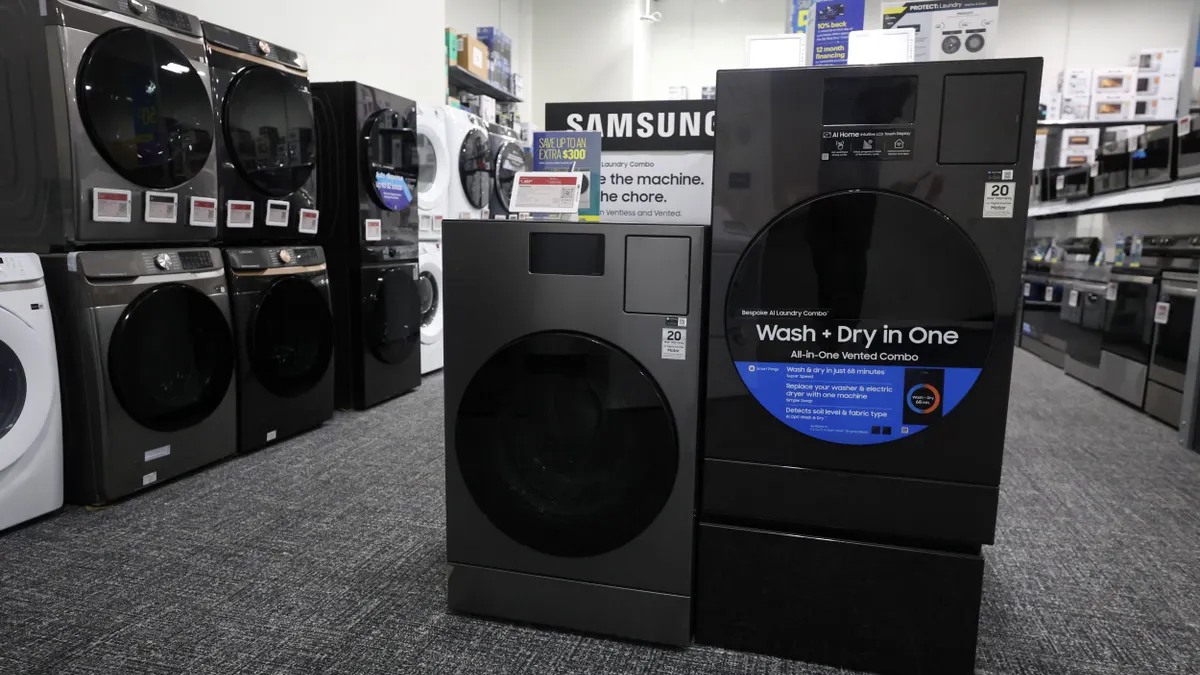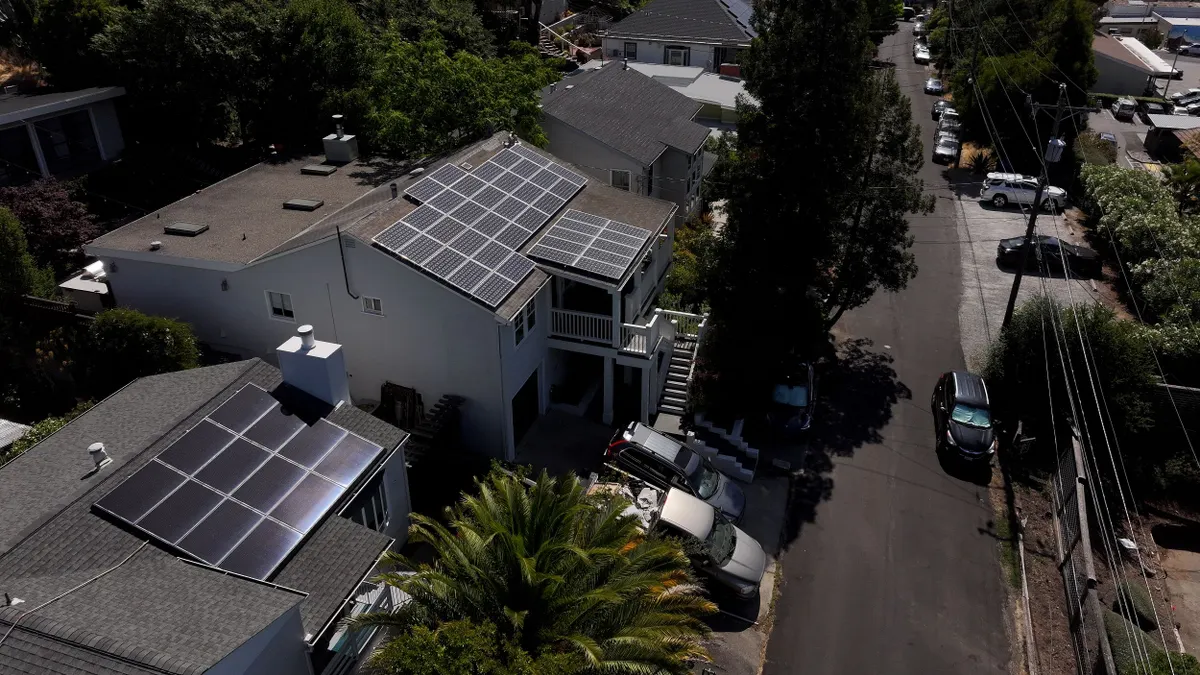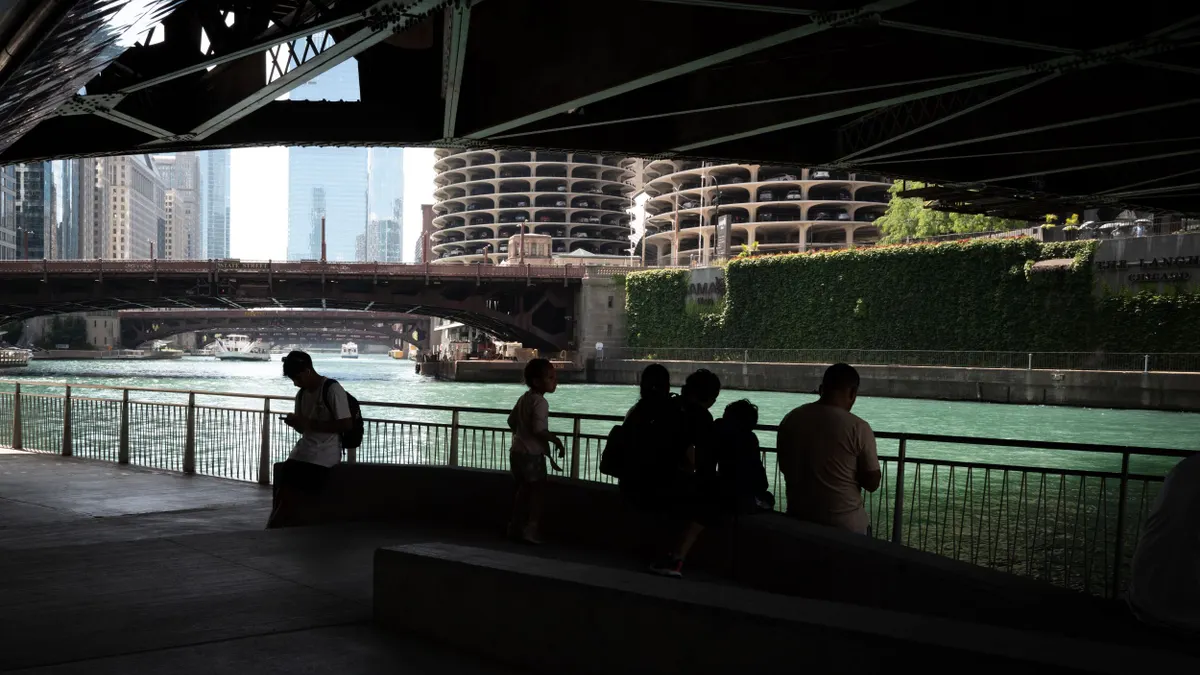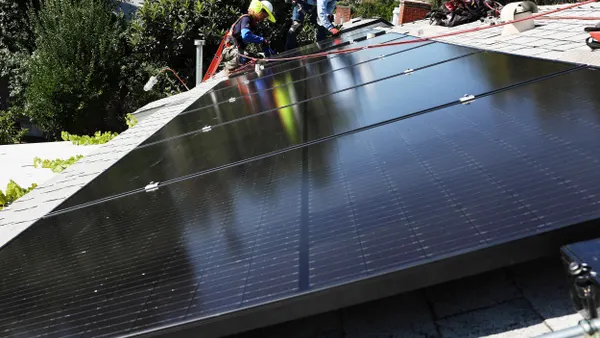Two shifts in the transportation sector — the growth of ride- and car-sharing services, along with electrification — will combine to create changes beyond the cars we drive and the fuels they consume, say experts in the mobility space.
Parking lots could become grid resources as ubiquitous charging ports turn vehicles into grid-balancing assets even as personal car ownership rates decline.
But for all the progress being made towards electrified transportation — and the economic and environmental benefits it is expected to bring — there is a critical component missing from the analysis, according to Aric Ohana, co-founder of Envoy, an electric car-sharing service.
"How will that impact our cities and our built environment? All things happening in mobility will have a major impact on commercial real estate," Ohana told Utility Dive.
"Where we see mobility going in urban and even suburban areas, there's already a clear shift towards options and away from [car] ownership."

Aric Ohana
Co-founder, Envoy
Envoy, based in California, provides turnkey electric vehicle car-sharing services to a range of clients, from apartment complexes to hotels and workplaces. And its vehicles can be used by drivers of Lyft and Uber, as well as those providing other gig services. Along with supplying vehicles, it is also helping develop the necessary infrastructure, when its service is offered by a property.
"Where we see mobility going in urban and even suburban areas, there's already a clear shift toward options and away from [car] ownership," said Ohana.
These changes create both challenges and opportunities for charging infrastructure, because they run counter to the first wave of electric car adopters, which have largely been homeowners. New mobility companies will play a role in developing the public infrastructure, which ultimately will be key to wider adoption of EVs, say several industry players.
"There's a great need for charging in downtown areas," Adam Gromis, Uber's global lead for sustainability and environmental impact, told Utility Dive. "But getting electrons to urban spaces is kind of a new concept, and by and large, efforts by government and auto companies and energy companies have focused on other places to put charging stations."
1st wave of EV adoption focused on homeowners
Homeowners are more than three times more likely to own an electric vehicle than someone who is renting, according to research published last July by the Smithsonian, likely due to lack of public infrastructure charging.
Some 80% of EV charging is done at home, according to the U.S. Department of Energy. But a third of all households in the United States are rented, which can create a stumbling block to going electric, particularly those living in multi-unit dwellings — it's like owning a car in a city with no gas stations.
"As communities are trying to decarbonize, the increased utilization of ride share programs can exacerbate [emissions] in the short-term, if they are not electrified."

John Gartner
Leader of transportation research and consulting, Navigant
"The changing demographics of EV ownership, the changing views on mobility and the split between personal and shared vehicles ... all of that has an impact on public charging networks," John Gartner, who leads Navigant's transportation research and consulting efforts, told Utility Dive.
It's not that Americans are on the road any less, but who is driving and who owns the car is changing. In some cities, there has been pushback to ride sharing services due to the "overwhelming numbers" of Uber and Lyft drivers, said Gartner.
"As communities are trying to decarbonize, the increased utilization of ride share programs can exacerbate [emissions] in the short-term, if they are not electrified," Gartner said.
Uber and Lyft make 'deliberate' efforts at electrification
Both companies say they want to avoid that, and each has taken steps to encourage electrification.
Lyft earlier this month made several electrification announcements, including launching EVs as an expansion of Express Drive, Lyft's car rental program. And the company says passengers will soon be able to select a "Green Mode" to hail hybrid or electric vehicles. The service will be offered "first in Seattle and then in other parts of the country," the company said in a statement.
The two ride-sharing giants "have been taking a very deliberate approach in encouraging their drivers to electrify."

John Gartner
Leader of transportation research and consulting, Navigant
Uber recently began urging its drivers to go electric, and providing some incentives, as it works toward providing 5 million EV rides, a milestone the company expects to hit this year. In London, the company is aiming for 100% electric trips by 2025, said Gromis.
But despite the rapidly-growing interest in EVs, both companies have only begun working to facilitate the shift in the United States.
"We're in the early stage of the game, and it will take any number of solutions to fit drivers' needs," Gromis said.
Generally speaking, the two ride-sharing giants "have been taking a very deliberate approach in encouraging their drivers to electrify," Gartner said.
Next phase of EV adoption will require public charging
"When we look at the market, we believe the way to get to broad-based [EV] adoption is broad-based deployment of [charging] infrastructure," Greenlots CEO Brett Hauser told Utility Dive.
The EV industry has long debated the chicken-egg conundrum: Do we first need more EVs, or more chargers? Hauser said more public charging is essential — but not simple to deploy or operate.
Public charging stations aren't profitable right now, in part due to low utilization and rate structures that disadvantage them as a businesses. "It's going to take a while to get to a position where you can put a station in the ground and it is profitable," Hauser said.
"[T]he importance of public charging has increased. And travel patterns and usage are going to have a very profound effect on where the infrastructure is deployed and utilized."

Brett Hauser
CEO, Greenlots
Greenlots was recently acquired by a subsidiary of Royal Dutch Shell, and many market observers say they expect similar deals may be in the works. According to Hauser, large energy companies moving into the EV charging space is one way to ensure the necessary infrastructure is built.
"We have to enable those groups that have a long-term view of the market and patient capital. We have to enable incumbents in energy space to deploy infrastructure," Hauser said. "We're in a marathon here, not a sprint."
Hauser said that as ride sharing has grown, "the importance of public charging has increased. And travel patterns and usage are going to have a very profound effect on where the infrastructure is deployed and utilized."
Companies are working with the current EV charging business model whereby low utilization and utility rates that include demand charges have made it "hard to profit," said Hauser. But there is one model that can consistently show a profit.
"A big asterisk to that is fleets. And whether it is a ride sharing fleet or medium- and heavy-duty fleets, these groups don't necessarily want to own the [charging] infrastructure," Hauser said.
That may not be necessary: Uber and Lyft have been working with local utilities, helping to site charging stations in order to ensure strong utilization.
Utilities include ride share companies in planning efforts
When Pepco developed its transportation electrification plan for the District of Columbia, the utility sat down with representatives for Uber and Lyft to discuss where to put DC Fast Charging stations.
The ride sharing companies "have already proven their place in transportation right now, through internal combustion engines. They've proven there is a market for them. We expect a natural progression to electric vehicles," Pepco's Rob Stewart, manager of smart grid and technology, told Utility Dive.
The ride-share programs "might be good entry into underserved communities."

Rob Stewart
Manager of Smart Grid and Technology, Pepco
Pepco wants to make sure its DCFC stations are sufficiently-utilized to justify the investment. With their high number of trips and miles driven, ride-sharing vehicles are a way to help ensure the stations are being used. And that means sitting down with the major companies to identify corridors and specific locations where the cars are frequently operating.
Pepco isn't looking for Lyft or Uber to pick up any of the investment cost, said Stewart, though they will pay to use them, along with other drivers. The ride-share programs "might be good entry into underserved communities," he added.
While DC Fast Charging stations will be needed, particularly to enable long-range travel, Envoy's Ohana said that the majority of charging will be measured in hours, not minutes.
They paved paradise and ... installed a battery
"Vehicles sit for a long time. Even in shared-utilization platforms ... they are still sitting 60% to 70% of the time," Ohana said. "In the future, the majority of our charging will be Level 2 and even less than Level 2. The majority of our charging will happen on a trickle charge."
Ohana sees opportunity in that vehicle downtime. He sees a future where every parking spot has an EV charger and parking lots become grid resources.
"People, on average, travel 15 miles round trip," said Ohana. Most of the storage capacity in the vehicle battery isn't really needed.
"Where we think energy is going, in cities — is parking spaces," said Ohana."They might actually serve as an energy management system.
Grid opportunities in home charging, too
Utilities see a similar opportunity in home charging: the potential to coordinate charging, using that long dwell time to soak up less-expensive energy at off-peak hours or when there is excess renewables. But those advanced capabilities will require technologies that allow utilities to interact with vehicle charging.
Home charging comes in two flavors, starting with EV owners simply plugging the vehicle into a standard wall outlet. A step up from there is Level 2, which runs on 240 volts and is akin to a clothes dryer or oven. For utilities, this is where they can start to notice the extra load.
"We don't foresee any bulk system issues. We see the potential for fuses to blow or overload transformers."

Rob Stewart
Manager of Smart Grid and Technology, Pepco
"You can buy [a] Level 2 charger from Home Depot and have it installed by an electrician," said Stewart. They're "dumb chargers," he said. "We can't communicate with them or manage them in any way." In fact, the utility may not even know they are on the system.
Along with its public charging proposals, Pepco wants to roll out smart chargers for EV owners. "In the future, we're going to want to create programs that utilize that capability, and the sooner we can get them in, the better," said Stewart.
While Pepco sees no issue in acquiring the electricity its EV-owning customers will need, delivering it could be problematic in the future.
"It depends on how it evolves over time," said Stewart. "We don't foresee any bulk system issues. We see the potential for fuses to blow or overload transformers."
A century-old paradigm is about to change
As mobility disruption continues and EV adoption accelerates, the changes and their impacts will begin to become more apparent, said Ohana.
There are signs that the prevalence of car ownership is waning. Cities are seeing declines in the number of vehicles registered per capita, and the number of drivers licenses issued has been falling for years.
"For the last 100 years, mobility revolved around personal car ownership," Ohana said. "We're going to see major impacts on the existing infrastructure that is there to support car ownership."
"It's really about convincing people that car ownership is not a necessary expense or liability. It's all leading to a future that is electrified and autonomous."

Aric Ohana
Co-founder, Envoy
That may include electrified parking lots, but also a decrease in how many parking spaces cities need overall.
"Today, the early adopters tend to be people who have garages," said Navigant's Gartner. "There are not many people buying an EV if they don't have access to a parking space ... but fleets need to park and charge somewhere, and individual drivers will, too."
Ultimately, Ohana and Gromis both say the future of transportation will look very different than it does today.
"It's really about convincing people that car ownership is not a necessary expense or liability," said Ohana. "It's all leading to a future that is electrified and autonomous."
According to Uber's Gromis, those changes will impact how electric vehicle charging infrastructure is deployed. "If you want to keep that paradigm [of car ownership], you have to put electrons everywhere. That's a long game to play, and an expensive one," he said.







